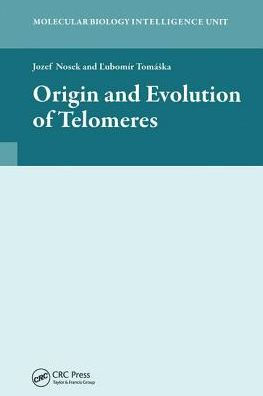Origin and Evolution of Telomeres
Linear chromosomes represent an evolutionary innovation associated with the origin of eukaryotic cells. This book describes how linear chromosomes and primordial pathways for maintaining their terminal structures, telomeres, emerged in early eukaryotes. Telomeres, derived from the Greek meaning terminal part, were first described by Hermann Muller in 1938. Telomeres are specialized structures that comprise the ends of linear chromosomes in eukaryotes. Linearity is crucial for chromosome pairing during meiosis and sexual reproduction. Inspired by Dobzhansky's dictum that "nothing in biology makes sense except in the light of evolution", this book brings together information about the origin and evolution of telomeres, their functions and the consequences of eukaryotic linearity which is an essential prerequisite of meiotic cell division and sexual reproduction. Selective pressure toward linearization must have been associated with the emergence of robust and redundant mechanisms for the maintenance of telomeres. These pathways comprise a molecular clock involved in cell senescence, carcinogenesis and immortalization.
1136506580
Origin and Evolution of Telomeres
Linear chromosomes represent an evolutionary innovation associated with the origin of eukaryotic cells. This book describes how linear chromosomes and primordial pathways for maintaining their terminal structures, telomeres, emerged in early eukaryotes. Telomeres, derived from the Greek meaning terminal part, were first described by Hermann Muller in 1938. Telomeres are specialized structures that comprise the ends of linear chromosomes in eukaryotes. Linearity is crucial for chromosome pairing during meiosis and sexual reproduction. Inspired by Dobzhansky's dictum that "nothing in biology makes sense except in the light of evolution", this book brings together information about the origin and evolution of telomeres, their functions and the consequences of eukaryotic linearity which is an essential prerequisite of meiotic cell division and sexual reproduction. Selective pressure toward linearization must have been associated with the emergence of robust and redundant mechanisms for the maintenance of telomeres. These pathways comprise a molecular clock involved in cell senescence, carcinogenesis and immortalization.
200.0
In Stock
5
1

Origin and Evolution of Telomeres
194
Origin and Evolution of Telomeres
194
200.0
In Stock

Product Details
| ISBN-13: | 9781587063091 |
|---|---|
| Publisher: | Taylor & Francis |
| Publication date: | 05/26/2008 |
| Series: | Molecular Biology Intelligence Unit Series |
| Pages: | 194 |
| Product dimensions: | 6.20(w) x 9.20(h) x 0.60(d) |
About the Author
From the B&N Reads Blog
